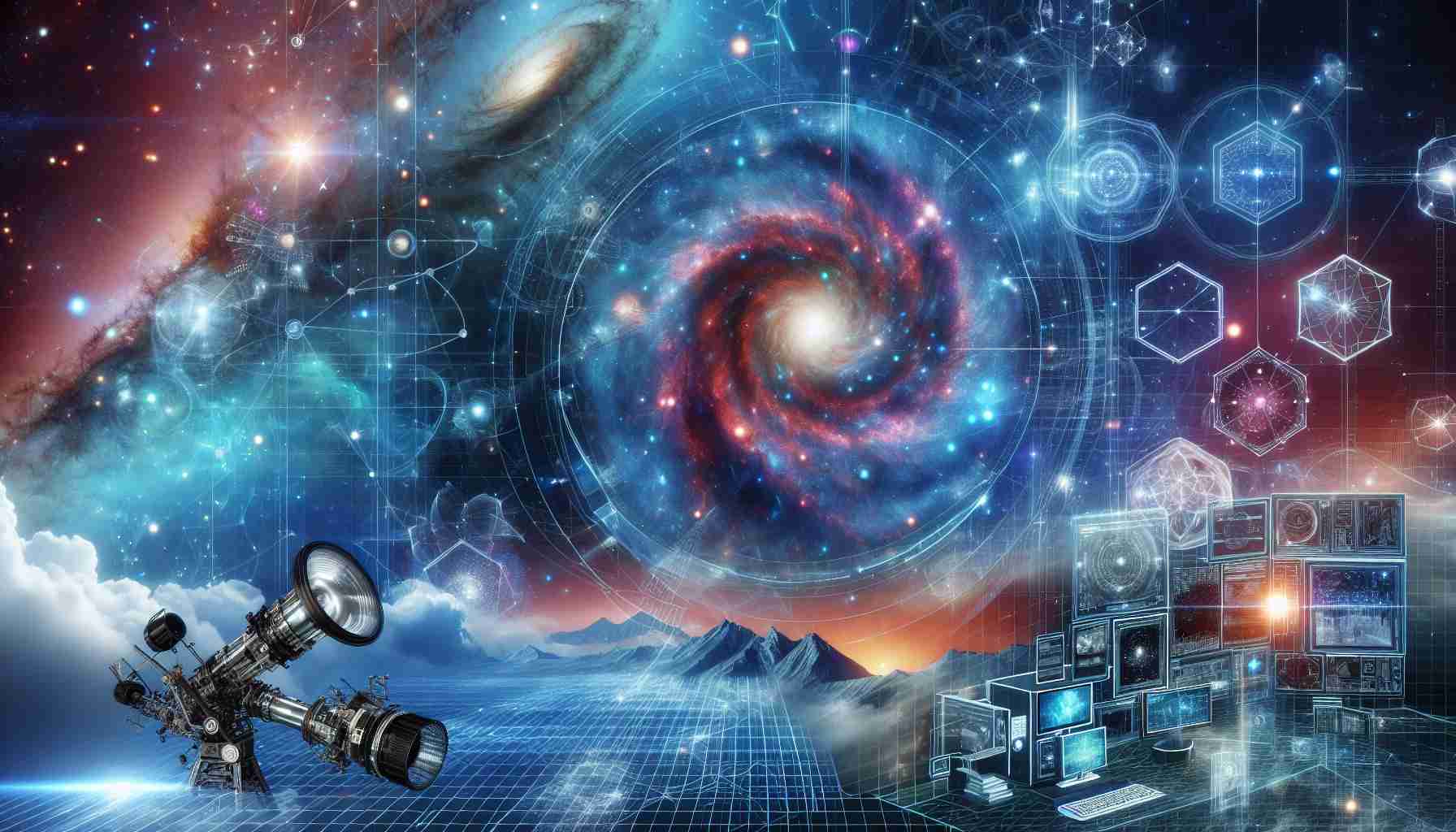In the vast expanse of the universe, dark energy remains one of the most perplexing phenomena. Constituting approximately 68% of the cosmos, this mysterious force is believed to drive the accelerated expansion of the universe. Recent advancements in technology are shedding new light on this elusive subject, fostering revolutionary hypotheses and potential breakthroughs.
Many scientific initiatives are now leveraging the power of artificial intelligence and machine learning to analyze cosmic data at unprecedented scales. These cutting-edge technologies enable researchers to process vast amounts of information gathered from telescopes and satellites, revealing intricate patterns and anomalies which might have remained hidden before.
Moreover, the deployment of next-generation telescopes—such as the upcoming James Webb Space Telescope—promises deeper insights into the properties of dark energy. These advanced instruments offer unparalleled precision and sensitivity, broadening our observational capabilities to witness distant galaxies and supernovae with unprecedented clarity.
Interestingly, some scientists propose that dark energy can be linked to quantum field theory, sparking potential interdisciplinary collaborations that could unravel the links between quantum mechanics and cosmology. This bold hypothesis, if verified, could reshape our understanding of the universe’s underlying principles.
As new data pours in and technology progresses, the mysteries of dark energy may gradually unfold, paving the way for groundbreaking discoveries in astrophysics. The world watches with bated breath as scientists venture closer to solving one of the universe’s greatest enigmas.
The Next Frontier: How AI and Next-Gen Telescopes Are Unraveling the Dark Energy Mystery
In the quest to comprehend dark energy, an enigmatic force believed to comprise approximately 68% of the universe, technological innovations are playing a pivotal role. With recent strides in artificial intelligence (AI) and machine learning, researchers are now able to analyze cosmic data more efficiently than ever before, providing new insights that could transform our understanding of the cosmos.
AI and Machine Learning: A Cosmic Data Revolution
The vast datasets collected from telescopes and satellites contain patterns and anomalies that have eluded scientists for years. Leveraging AI and machine learning allows for processing this data on an unprecedented scale. These technologies enable the identification of intricate patterns, which can lead to the development of new hypotheses about dark energy’s nature and its impact on the universe. By automating the data analysis process, AI helps uncover hidden connections and insights that might have remained unnoticed.
The Promise of Next-Generation Telescopes
The advent of next-generation telescopes, such as the highly anticipated James Webb Space Telescope, is set to revolutionize our observational capabilities. These instruments, offering extraordinary precision and sensitivity, will allow astronomers to study distant galaxies and supernovae with an unprecedented level of detail. By expanding the horizon of observable phenomena, these telescopes can pick up subtle signatures of dark energy and help map its influence across the universe.
Bridging Quantum Mechanics and Cosmology
One of the more intriguing hypotheses currently being explored suggests a connection between dark energy and quantum field theory. This connection could open up interdisciplinary research opportunities, bringing together cosmologists and quantum physicists to explore the potential links between these two fundamental aspects of nature. If proven, this theory could profoundly alter our understanding of the universe’s fundamental laws.
Trends and Predictions
As technology advances, scientists predict an era of groundbreaking discoveries in astrophysics. The ability to analyze complex data at scale, combined with advanced observational tools, signifies a significant leap forward in understanding dark energy. These innovations not only offer the potential to solve one of the universe’s greatest enigmas but also promise to provide valuable insights into other astronomical phenomena.
Conclusion
The exploration of dark energy through AI, machine learning, and next-generation telescopes represents the cutting edge of astrophysics research. As these technologies continue to evolve, they will likely unlock new levels of understanding, bringing us closer to unraveling the mysteries of the universe. For more details about missions and technological advancements in astronomy, visit NASA’s official website.
















